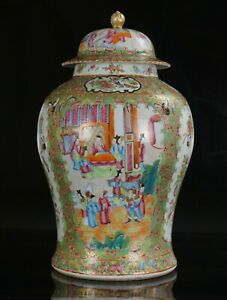Features
- Region of Origin: Chinese
- Featured Refinements: Famille Rose
- Country of Origin: China
- Features: Handcarved, Handpainted
- Product: Vase
- Antique: Yes
- Age: 1850-1899
- Original/Repro: Antique Original
- Primary Material: Porcelain/ Pottery
- Chinese Dynasty: Qing (1644-1911)
Famille Rose Porcelain
Famille rose porcelain, (French: “rose family”) group of Chinese porcelain wares characterized by decoration painted in opaque overglaze rose colours, chiefly shades of pink and carmine. These colours were known to the Chinese as yangcai (“foreign colours”) because they were first introduced from Europe (about 1685). By the time of the reign of Yongzheng (1722–35) in the Qing dynasty (1644–1911/12), these shades were favoured over the translucent famille verte overglaze colours that were previously used and famille rose wares became especially popular during that reign.

Source, British Museum.
The ‘famille rose’ palette became very popular with foreigners, and during the 18th and 19th centuries many ceramics with this palette and the related ones of ‘famille verte’ and ‘famille noire’ were exported by the Chinese around the world.
Peaches are a symbol of long life in China. The Queen Mother of the West, who ruled over one of the paradises, had peach trees that bloomed for thousands of years. During this period many objects were also made in the shape of peaches, which were considered auspicious.
DURING the eighteenth century, but at a time which has not been accurately
defined, the reds and pinks derived from gold were first used. This may have been as early as the latter years of the reign of K’ang-hsi,
but it was during the Ch’ien-lung period that
these colours formed a distinctive note in the
decoration of porcelain, and led to their being
classified under the name of ” Famille rose.”
